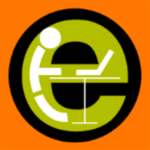We can help reverse the problems caused by email overload. Be part of the solution.
1. Respect recipients’ time
Make your email easy to read: use these plain English tips to save others time AND make your communication more effective.
2. Short is not rude
It’s ok to be brief. Don’t take brevity personally and know that others won’t. Wordy responses take longer to read. People will scan it and are less likely to read it all; key details can be easily missed.
3. Celebrate clarity
Subject line: write a short subject line that clearly gives the topic.
Opening line: make it the basic reason for writing.
4. Slash CCs
Only CC someone who really needs this message. Don’t thoughtlessly ‘Reply all’: choose individual recipients.
5. Tighten the thread
If you need to include the email trail showing the context, cut what’s not relevant. If it’s long, summarise or make a phone call instead.
6. Reduce attachments
Don’t use images like logos in your signature – they’ll be attached and I’ll try to open it in case it’s something relevant.
7. Should we expect an instant response?
Don’t feel you need to give an instant response, and don’t expect to get one. Skype or the telephone are your tools if something is urgent.
8. Disconnect sometimes
Can you calendar half-days for email-free working? And you should be having email-free evenings, weekends, holidays. Have an ‘auto-response’ that makes it clear you’re not checking.
9. Reference this charter
Spread the word and help change email culture. Reference this charter in your email footer.
This charter was adapted from emailcharter.org which as of 18 Jan 2019 seems to have died. 🙁 This text was copied from the University of Kent’s website who have kept the email charter alive.
There is more information about the email charter at theTEDBlog

